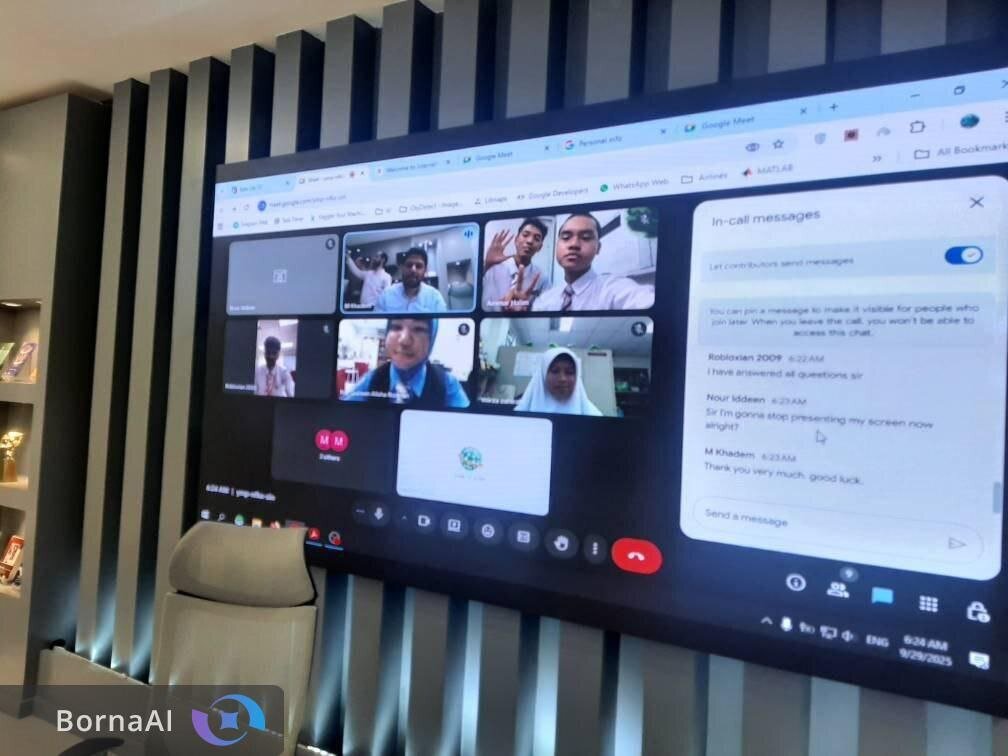20 countries attend intl. nano-tech Olympiad for students

TEHRAN – Participants from 20 countries attended the first International Nanotechnology Olympiad (INO) for high school students, held online on September 29.
The event attracted students (aged 16 to 19) from different countries like Germany, Bangladesh, Jordan, Kuwait, Malaysia, Oman, Pakistan, Palestine, Romania, Russia, Saudi Arabia, Tajikistan, Thailand, Tunisia, England, the United States, Venezuela, India, Australia, and Iran.
The results of the Olympiad will be announced in a week, Borna news agency quoted Afshin Ramzi, the secretary of the INO, as saying.
Iran Nanotechnology Innovation Council (INIC) launched the first National Nanoscience and Nanotechnology Student Olympiad in the Iranian year 1389 (March 2010-2011). This initiative followed a series of successful nano-education programs held in schools across the country and combined a theoretical exam with a hands-on laboratory project.
Following the 16th national event, which attracted 113,667 high school students from across the country, INIC decided to hold the event at a global level.
The initiative aims to promote global scientific engagement in cutting-edge technologies among youth to challenge their knowledge, creativity, and talent in an international scientific arena.
As a unique scientific competition, it also aims to identify and nurture scientific elites in the field of nanotechnology.
The INO 2025 presented a unique opportunity for participants to delve into the world of nanotechnology and its potential to address pressing environmental challenges. The competition was structured into two main parts.
The Initial phase evaluated participants’ grasp of fundamental concepts in nanotechnology and its environmental applications. To support their preparation, participants could access nine educational films and a comprehensive booklet available on the official website, which covered essential topics and relevant applications. Additionally, they would receive four specialized educational films and a targeted booklet that focuses particularly on nanotechnology’s applications in the environment. This constituted 70 percent of the overall score.
Idea Generation and Film Submission was the second phase of the competition. In this creative segment, participants were challenged to devise innovative solutions to global issues that can be tackled through nanotechnology. They had to create a short film that effectively conveys their ideas and proposed solutions. This part accounted for the remaining 30 percent of the total score.
Overall, the Olympiad emphasized a blend of theoretical knowledge and practical creativity. By combining rigorous assessment with creative project work, the competition aimed to cultivate a deeper understanding of the transformative potential of nanotechnology in addressing global challenges.
Nanotechnology takes a leap forward
Iran has made significant progress in nanotechnology over the past year (August 2024 -August 2025), with more than a 100 percent increase in nanotech products exports, indexing 10,860 articles in the Web of Science (WoS), and being ranked sixth in publishing nanotech articles.
Iran’s activities in nanotechnology began in 2001. Two years later, the headquarters for nanotechnology was established to promote knowledge in the field. The first national strategic plan, titled ‘future strategic document’, was developed in 2005, aimed to place Iran among the top 15 countries in the field, focusing on ongoing improvement of the country’s position to generate wealth and improve people’s quality of life.
Later, the name of the organization changed to ‘nano and micro technology headquarters’ to follow up on its missions and tasks in both fields.
Over the past year, from August 22, 2024, to August 23, 2025, significant measures were taken to improve existing industries, expand and manage sustainable exports and nano-product markets at national, regional, and global levels, promote Iranian made products in regional markets, foster innovation from novel technologies with significant economic and social impacts, maintain the country’s scientific status and improve its authority in nanoscience.
Iran’s nanotechnology products in various industries are classified into 13 main categories including Civil engineering and construction; Optics, electronics, and photonics; Petroleum and petrochemicals; Pharmaceuticals, health, and well-being; home appliances; Power and energy; Raw materials; Chemicals; Textiles and clothing; Equipment; Automotive industry and transportation; Industrial machinery; Agriculture, animal husbandry, and Water, according to data published by the vice Presidency for Science and Technology.
Some 89.6 percent of Iranian nanotechnology products are exported to Asian countries, according to data released by the national headquarters for the development of nanotechnology.
Europe, Africa, America, and Australia are the next destinations with 6.8 percent, 2.5 percent, and 1 percent of imports, respectively.
The data, related to the Iranian calendar year 1402 (March 2023-March 2024), also show that neighboring countries are the primary export destinations for Iran’s nanotechnology products.
Iraq, Turkey, and Afghanistan are the top three importers, holding 23.1 percent, 6.9 percent, and 6.5 percent shares of the imports.
Pakistan, the United Arab Emirates, Russia, China, and India rank next.
MT/MG
Leave a Comment